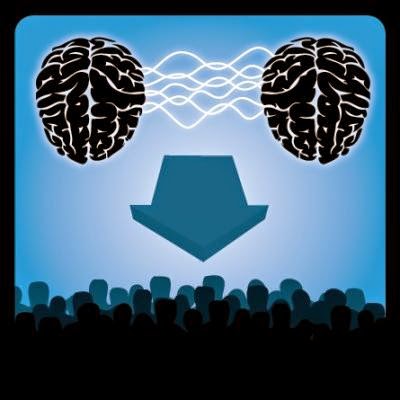 Heather Callaghan
Heather Callaghan
Activist Post
Recently, I wrote about findings showing that the brainwaves of people viewing the same movie are ‘synched.’ Some people thought this was great news, suggesting that it meant more connection and intimacy. But people who feel more disengaged or isolated by spending time with people watching media would probably doubt that suggestion very much.
Building on that discovery, researchers are testing brainwaves to forecast public response to television programming. Of course, this has questionable implications.
And, now, it only takes a few people to accurately predict the mindset – via brainwaves – of the masses. Is that how far the “culturing” of culture has come along?
Having a reliable method to forecast response from the general population harnesses incredible power to the media, marketing and public relations industries. If a new study done at the City College of New York (CCNY) in partnership with Georgia Tech is accurate, only a few individuals are needed to provide strong predictors that represent “the masses.”
The authors analyzed the brainwaves of 16 people as they watched mainstream television content. Researchers were able to accurately predict the preferences of large TV audiences, up to 90 percent in the case of Super Bowl commercials. The findings appear in a paper entitled “Audience Preferences Are Predicted by Temporal Reliability of Neural Processing,” which was just published in the latest edition of Nature Communications.
Why use various brain graphs to discover this instead of other methods like questionnaires?
Lead author, Jacek Dmochowski said:
Alternative methods such as self-reports are fraught with problems as people conform their responses to their own values and expectations.
They wanted to use electroencephalography (EEG) because, in principle, it alleviates this shortcoming by providing immediate physiological responses immune to such self-biasing.
He adds:
Our findings show that these immediate responses are in fact closely tied to the subsequent behavior of the general population.
It kind of sounds like the viewers do not realize the messages they are getting – nor their perceived responses.
Senior author Lucas Parra, Herbert Kayser Professor of Biomedical Engineering at CCNY explains the previous researcher on the synched minds of movie goers:
When two people watch a video, their brains respond similarly – but only if the video is engaging. Popular shows and commercials draw our attention and make our brainwaves very reliable; the audience is literally ‘in-sync’.
Study participants watched scenes from The Walking Dead TV show and several commercials from the 2012 and 2013 Super Bowls. EEG electrodes were placed on their heads to capture brain activity. The reliability of the recorded neural activity was then compared to audience reactions in the general population using publicly available social media data provided by the Harmony Institute and ratings from USA Today’s Super Bowl Ad Meter.
Brain activity among our participants watching The Walking Dead predicted 40 percent of the associated Twitter traffic. When brainwaves were in agreement, the number of tweets tended to increase.
Brainwaves also predicted 60 percent of the Nielsen ratings that measure the size of a TV audience.
Enmeshed Masses
The study was even more accurate (90 percent) when comparing preferences for Super Bowl ads. For instance, researchers saw very similar brainwaves from their participants as they watched a 2012 Budweiser commercial that featured a beer-fetching dog. The general public voted the ad as their second favorite that year. The study found little agreement in the brain activity among participants when watching a GoDaddy commercial featuring a kissing couple. It was among the worst rated ads in 2012.
Lovely…
Using functional magnetic resonance imaging (fMRI), they found evidence that brainwaves for engaging ads could be driven by blood-oxygenation-level-dependent (BOLD) activity in visual, auditory and attention brain areas.
Matthew Bezdek of Georgia Tech said:
Interesting ads may draw our attention and cause deeper sensory processing of the content.
The main, openly stated applications are marketing and film, and perhaps to predict the effectiveness of online educational videos by measuring how engaging they are. However, in their summary, they explain more…
The “one” and the “many” are synthesized
From their summary:
Our findings suggest that stimuli which we judge favourably may be those to which our brains respond in a stereotypical manner shared by our peers.
Predicting the behaviour of large groups is inherent to such diverse processes as forecasting election results, anticipating the reception to upcoming films, and foreseeing the effects of changes to laws or policies.
[…]
Here we ask whether the neural activity of multiple individuals may collectively predict the behaviour of large groups.
Indeed. It’s not really about individual interest but predicting mass behavior that already appears to be highly linked up.
An openly-voiced study like this is another example of the importance in guarding the brain and heart above all else. Clearly, the mind has no firewall.
Also see:
The Synchronized Brains of Movie Viewers
Heather Callaghan is a natural health blogger and food freedom activist. You can see her work at NaturalBlaze.com and ActivistPost.com. Like at Facebook.
Recent posts by Heather Callaghan:



Be the first to comment on "Audience Brain Waves Are Being Used to Better Predict YOU"